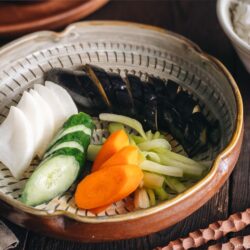
Tsukemono – Shiozuke (Salt Pickling)
Shiozuke is the simplest type of Japanese pickle (tsukemono). All you need is salt, water, and fresh seasonal vegetables. Try this pickle today to serve with your Japanese steamed rice and miso soup!
Ingredients
For the Vegetables to Pickle
- 3 Japanese or Chinese eggplants (use Lucky Iron Fish to retain the color; see Notes)
- 5 Japanese or Persian cucumbers
- 1 daikon radish
- 5 ribs celery
- 2 carrots
For the Brine
- 1000 ml water
- 50 g sea salt (for 5% brine; you can use 2% to 10% salt in the brine)
Instructions
- Gather all the ingredients. Also, prepare a clean container with a lid for each vegetable. You can also put all vegetables (except for the eggplants) in one big container.
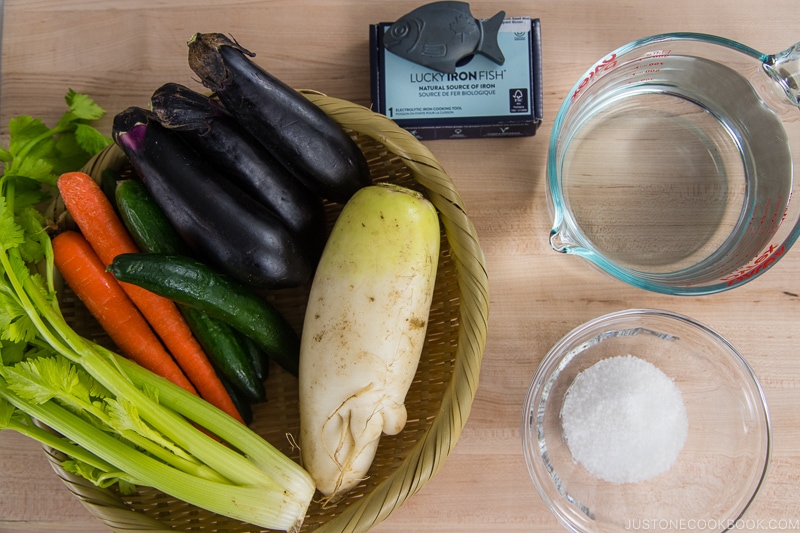
To Measure the Weight (Important!)
- Decide the amount of salt you want to use and weigh the salt. (Please read the blog post). This recipe is 5% brine (1000 ml water x 5% = 50 g sea salt). I made a double batch (100 g sea salt in 2000 ml water) as I used a lot of vegetables to demonstrate. You can use anywhere from 2% to 10% salt in the brine.
- Weigh each vegetable you’re pickling and write down the weights. At the next step, you‘ll need to find out the weight of the heavy objects to put on the vegetables.
- Figure out which heavy object to use. Make sure to include the plate that goes under the heavy object. The total weight (object + plate) needs to be 1.5 to 2 times of the total vegetable weight. You can use several plates, pie weights in a plastic bag, etc.
To Prepare the Brine
- Put 1000 ml water and 50 g sea salt in the pot. Let the salt dissolved completely over medium heat. You do not need to let it boil. You can turn off the heat once it’s warm and the salt is completely dissolved. Let cool. Tip: In winter, it’s fast if you put the pot outside (leaving the lid slightly ajar). In summer, make the brine the previous day.

To Cut the Vegetables (If Necessary)
- Eggplants: Cut off the end of 3 Japanese or Chinese eggplants. When you are making asazuke (quick pickles), cut the eggplant in half or cut a slit vertically about half the length in the eggplant to let the salt brine absorb. Otherwise, you don’t need to cut the eggplants. Place them in the container. Tip: To prevent the beautiful eggplants from discoloring, I used ‘Lucky Iron Fish‘ - a cooking tool that retains colors and adds iron to foods. It is optional but worth investing in, especially if you need more iron in your diet. You can purchase it on Amazon. I also use ‘Lucky Iron Fish‘ when I make Kuromame.
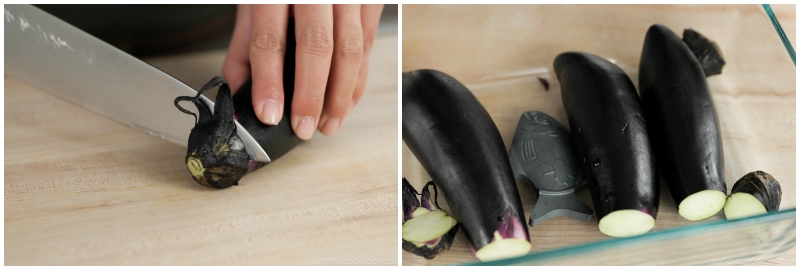
- Cucumbers: You don’t need to cut the 5 Japanese or Persian cucumbers. Place them in the container.
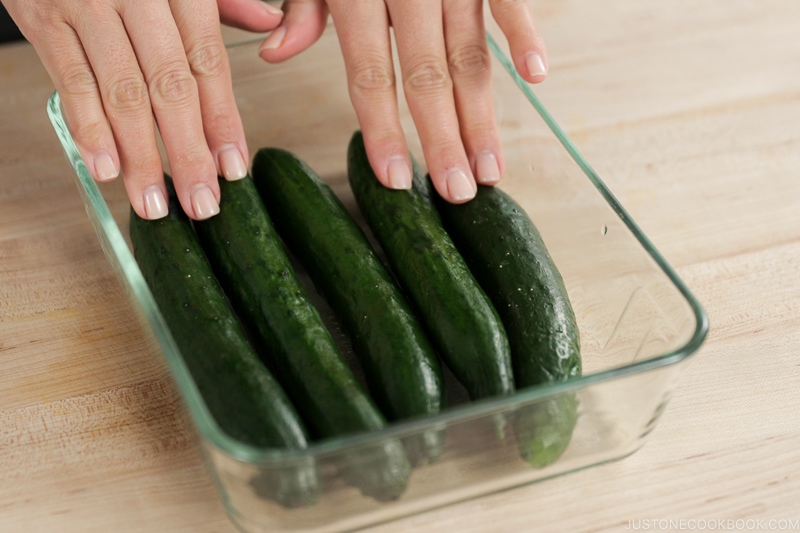
- Daikon radish: Peel and cut 1 daikon radish in half or quarters lengthwise depending on its size. Place them in the container.

- Celery: Remove the leafy parts of 5 ribs celery and cut into the length that will fit in the container. Place them in the container.

- Carrots: Peel and cut 2 carrots into the length that would fit in the container. Place them in the container.
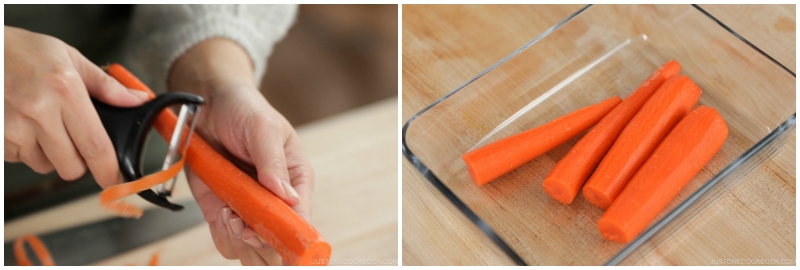
To Pickle the Vegetables
- Eggplants: Pour the brine until they are submerged.
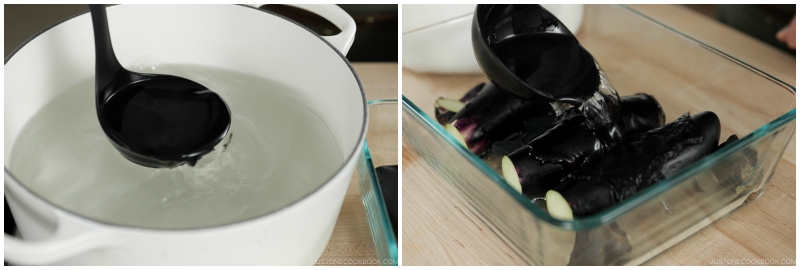
- Place a plate on top of the vegetable, and then put a weight on the plate. You can use plates and pie weights. Make sure the vegetables are completely submerged. Place a lid on and close tightly.

- Cucumbers: Pour the brine until they are submerged.
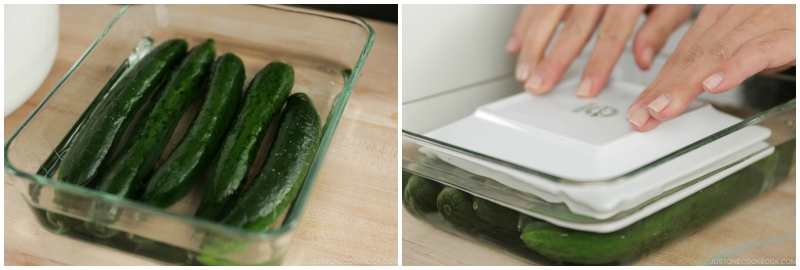
- Daikon radish: Pour the brine until they are submerged.

- Celeries: Pour the brine until they are submerged.
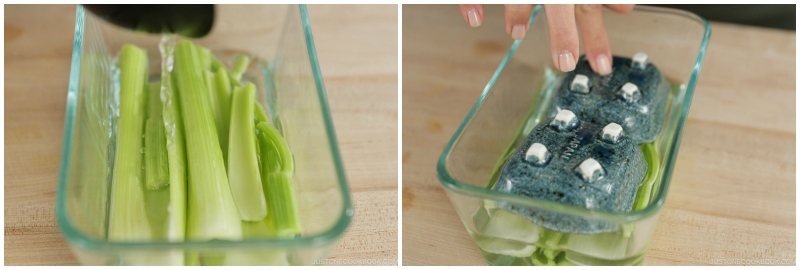
- Carrots: Pour the brine until they are submerged.
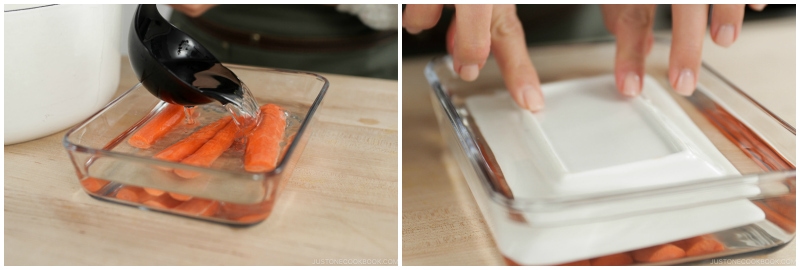
To Pickle
- Keep the tsukemono at room temperature for the best pickling. For my 5% brine, the best pickling time is 8 hours. Tip: You can adjust the pickling time according to your preference. Dense vegetable takes longer time to pickle than less dense vegetables. Please read the blog post.
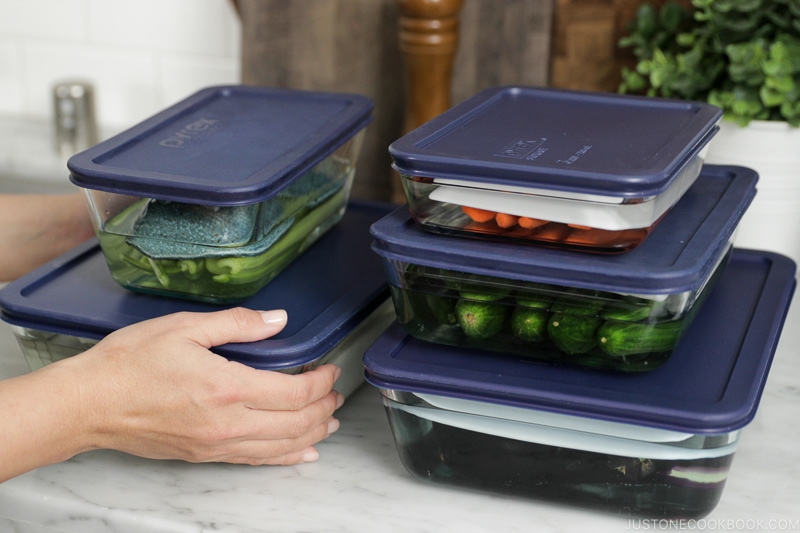
To Remove and Serve
- Remove the eggplants and Lucky Iron Fish from the brine and transfer to a clean airtight container or resealable plastic bag.
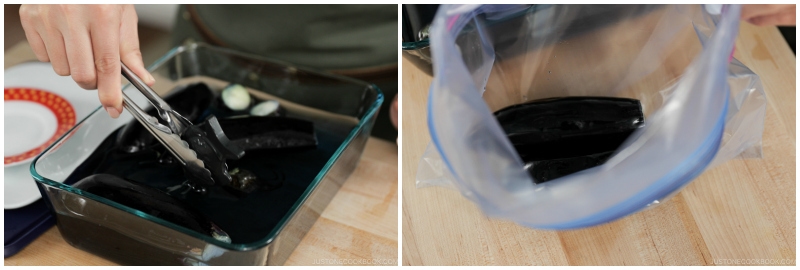
- Remove other vegetables from the brine and transfer to a clean airtight container.
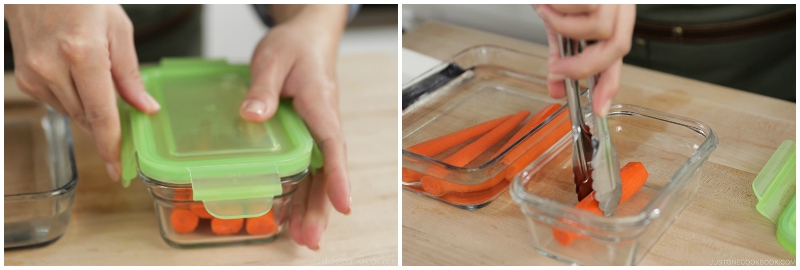
To Serve
- Cut the tsukemono into slices when you are ready to serve.

- Serve on a plate and enjoy!
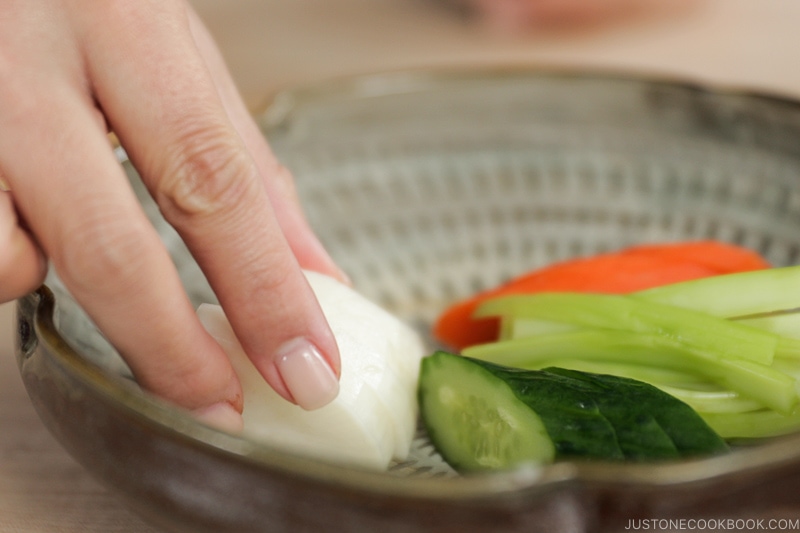
To Store
- With 5% brine, you can keep the shiozuke in the refrigerator for up to 4 days. Do not cut the tsukemono into slices until you are ready to serve.
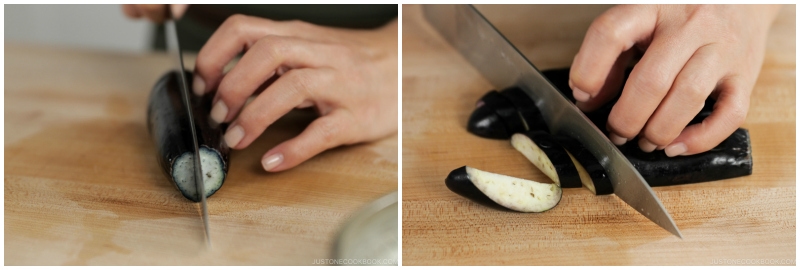
To Reuse of the Leftover Brine
- You can reuse the brine for up to a month. You may need to add more salt as the brine will become less salty. Also, it‘s good to boil the brine to keep it germ-free.
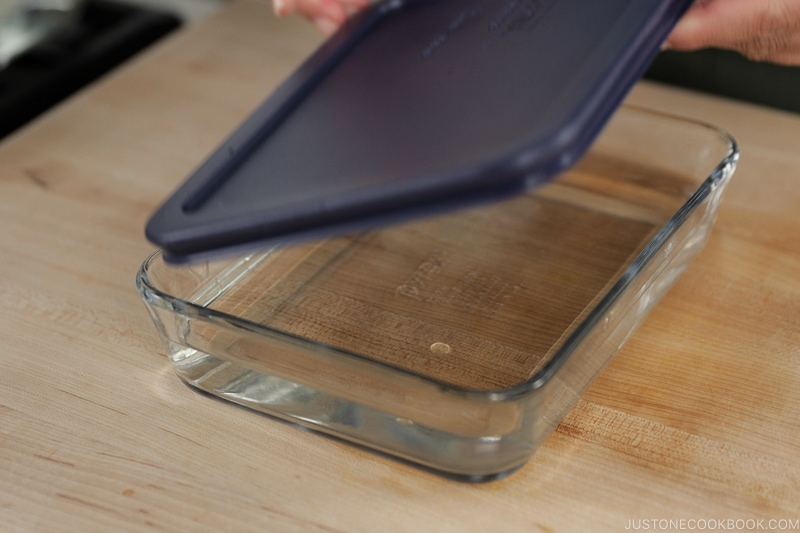
Notes
Nutrition
Calories: 89kcal, Carbohydrates: 20g, Protein: 3g, Fat: 1g, Saturated Fat: 1g, Sodium: 571mg, Potassium: 911mg, Fiber: 8g, Sugar: 12g, Vitamin A: 5432IU, Vitamin C: 28mg, Calcium: 115mg, Iron: 1mg